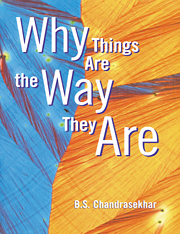Book contents
- Frontmatter
- Contents
- PREFACE
- I INTRODUCTION
- II CRYSTALS
- III PARTICLES AND WAVES
- IV THE ATOM
- V STATISTICAL PHYSICS
- VI THE QUANTUM MECHANICAL CRYSTAL
- VII COPPER WIRES AND GLASS RODS
- VIII SILVER SPOONS AND PLASTIC SPOONS
- IX GLASS PANES AND ALUMINIUM FOILS
- X ELECTRIC BULBS AND INSULATED CABLES
- XI MAGNETS
- XII SUPERCONDUCTORS
- XIII CONCLUSION
- GLOSSARY
- INDEX
- Frontmatter
- Contents
- PREFACE
- I INTRODUCTION
- II CRYSTALS
- III PARTICLES AND WAVES
- IV THE ATOM
- V STATISTICAL PHYSICS
- VI THE QUANTUM MECHANICAL CRYSTAL
- VII COPPER WIRES AND GLASS RODS
- VIII SILVER SPOONS AND PLASTIC SPOONS
- IX GLASS PANES AND ALUMINIUM FOILS
- X ELECTRIC BULBS AND INSULATED CABLES
- XI MAGNETS
- XII SUPERCONDUCTORS
- XIII CONCLUSION
- GLOSSARY
- INDEX
Summary
A friend once remarked ruefully to me, ‘Whenever I hear someone talk about a well-rounded person, I think of a spherical object with no distinguishing features on it.’ A closer examination of such a person does reveal some features; these, however, are likely to be concentrated in areas that are labelled literature, art, music, philosophy, history and others generally called the liberal arts or the humanities. The area called physics, on the other hand, usually tends to be blank, although physics is as impressive an achievement of the mind as any of the others. A reason for this state of affairs is contained in the response I often get from someone who hears that I am a physicist: ‘Physics was my most difficult subject in school. I never understood it.’ Instead of giving up, I try to explain to the person some problem I am working on at the moment, maybe in superconductivity. I use words, analogies, pictures drawn on a paper serviette: anything but mathematics that is more advanced than simple arithmetic. I am then, even if not always, rewarded by the person with a dawning of interest and a desire to learn more. Having enjoyed this activity during all these years that I have myself been learning physics through teaching and research, I decided to gather and organize these ideas into a book for people (and I believe there are many) who are curious about the physicist's picture of the world, especially the part which forms our immediate surroundings.
- Type
- Chapter
- Information
- Why Things Are the Way They Are , pp. ix - xPublisher: Cambridge University PressPrint publication year: 1997

